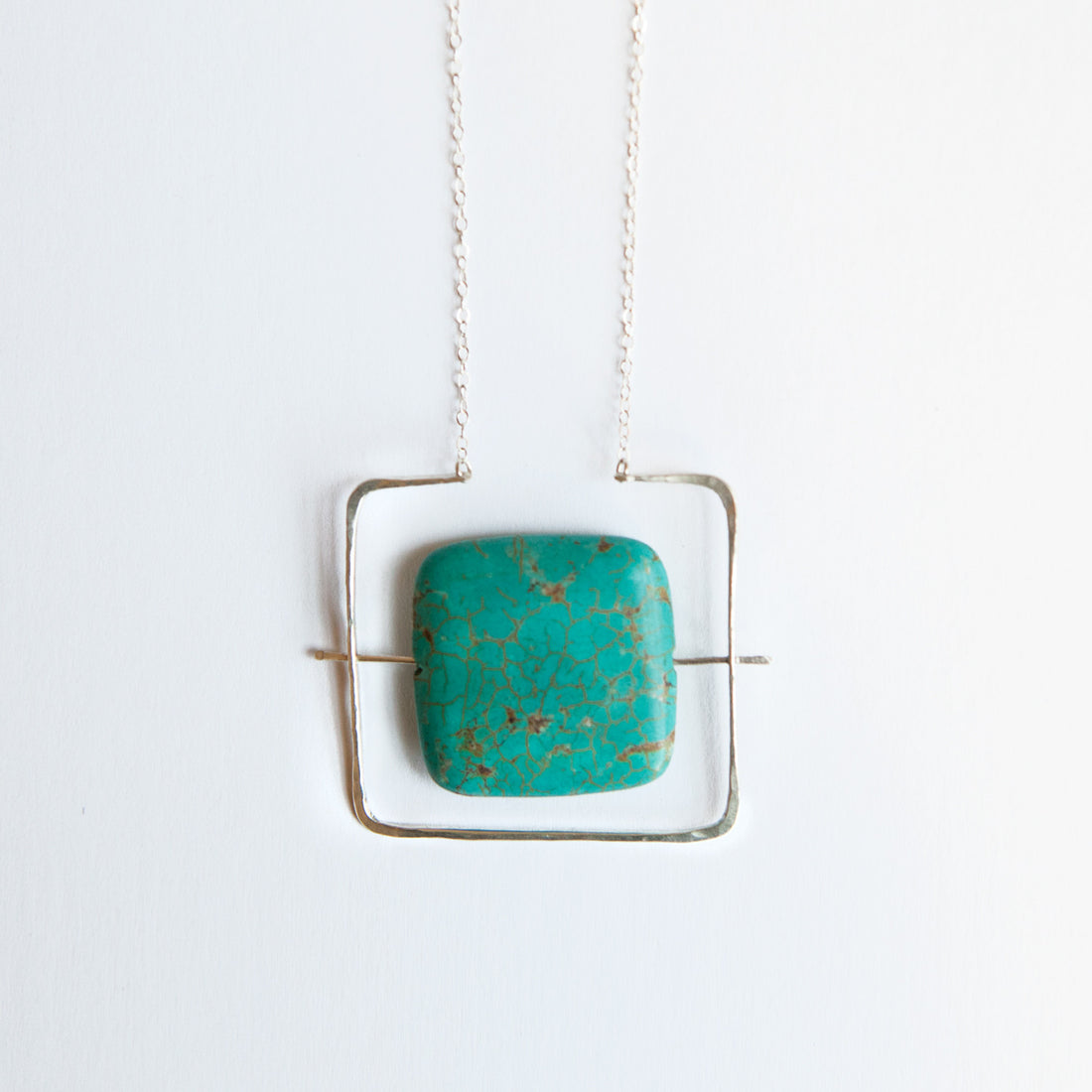Pamela Davis is an artist who works in a variety of media with a focus on metal, ceramics, and fiber. MuchoDesign is her jewelry and ceramics line. Each piece in this line represents a balance between technical process and experimentation. The work is handcrafted in her home studio in Olympia, WA. She is a graduate of The Evergreen State College where she studied studio arts in ceramics and metalworking.
We recently visited Pamela in her lovely home studio which overlooks the picturesque Lake Pattison. Over a homemade lunch, we spoke about her line, inspiration, and plans for the future.

How did you get started as an artist and designer? Particularly, what got you into making jewelry?
I grew up in a Mormon household, so I learned a variety of domestic crafts at a young age. It was later in my life when I realized the range and the history of what is traditionally defined as women’s work, and the persistent devaluation of it over the centuries. My fiber art reflects a commitment to elevate the domestic arts; it is also what led me to metalworking. I wished to create wearable pieces so I began attaching chain and metal findings to small embroidery pieces. The durability of metal attracted me. The subtractive and additive process of working with metal provides incredible versatility in design. My first metalworking class was at Pratt in Seattle. I continued that work in the fine metals studio and metal shop at Evergreen, there I fell in love with gas welding and metal casting. I have been building up my home studio for a while and my goal is to have the capability for larger metalwork within the next few years.

Tell us about your day in the studio. How do you start the morning? Any specific rituals?
My studio is partially in my home and partially in my garage, which means cleaning and straightening are usually the first order of business. Work flows so much better without a messy background. My garage, where I do hammering, soldering, and some drilling, is pretty creepy at night so I limit that part of the process to daylight hours. During the summer it’s not a problem but the short winter days are challenging. Living and working in the same space is another challenge, it can be really distracting. When I’m in production mode and working for hours at a time, the bed and a book are so tempting. The one advantage is when I have a new idea I can try it out immediately without having to get to the studio.
The number one ritual I have is drinking a couple cups of coffee before I start. Also breakfast...breakfast is very important to me. I have a hard time paying attention to my physical needs once I am working. I often get shaky or make mistake after mistake before I realize I need to stop and eat. Another ritual is list making. That usually happens the night before though.

You are also a working artist. How does this practice inform your jewelry designs?
My art and my jewelry are similar in that with both, I create what I want to see. That isn’t to say that things always turn out the way I envision them. My practices in both metal and ceramics are a continual learning process. I’m definitely someone who learns by doing, which means many designs don’t make it past the prototype stage. It also means I have a physical representation of a design’s evolution. I’ve learned to make maquettes and to work with lesser materials in the beginning stages. I have a hard time throwing out my attempts, whether art or jewelry. Often, when I revisit an old prototype, I see it so differently and sometimes with more appreciation. As my skills progress I have found new ways to approach a design or idea. In a sense, my prototypes are tangible notes. These notes also help me delineate the line between underworked and overworked.
The main difference between my art process and my jewelry process is concept. My jewelry design is mainly visually driven. When I am working on art, there are multiple concepts informing the work, whether it is something I’ve read, heard someone say, or an event that has provoked the piece.

What is inspiring you currently?
The ceramics community here is definitely a source of inspiration. A handful of other ceramic artists and I are currently working to streamline and better equip the ceramics studio at Arbutus Folk School in Olympia. Everyone is so helpful and willing to share techniques, equipment, and materials; the lack of competition is so refreshing!
The process of making is very important in my work. Artists and craftspeople tend to work very hard to hide the marks of their process, but for me that is the most interesting aspect. It provides narrative and demystifies art. I recently began teaching ceramics and watching the students’ process is very inspirational. When I teach I get to witness students’ process of experimentation with new materials and techniques. With my jewelry, I often hammer the metal because the mark it leaves hints at the process. Much of my work bears this mark; the mark also represents the accidents that happen during the learning process, but it’s surprisingly difficult to recreate those accidents. I love seeing the same spark in students when they come across a beautiful mistake or just choose to veer from the technique at hand and opt for experimentation.
The range of historical influences and inspiration is vast. When I started my undergraduate degree years ago, I studied classical archaeology. Ancient art and myths have always fascinated me, really all belief systems, especially woman’s place in it. Considering my strict religious upbringing this makes sense.
Currently I’m very influenced by socially engaged artists, especially those who address issues of education. As someone who took twenty years to finish my undergraduate work because of financial reasons, it hits close to home. Joseph Beuys’s Free International University, the Copenhagen Free University, the Trade School Coop, and Cassie Thornton’s work in debt visualization are very important to me.


